CHIANG MAI (Day 4 - part 1)
We walked along the canal to the north gate. Two large sea serpents inhabited the moat and many lovely flowers lined the way. After some confusion about taking a bus, we ended up simply taking a songthaew. It was a very long and very windy road to the top of the mountain.
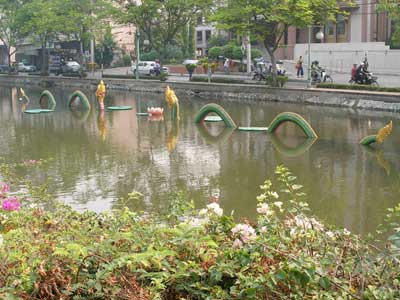
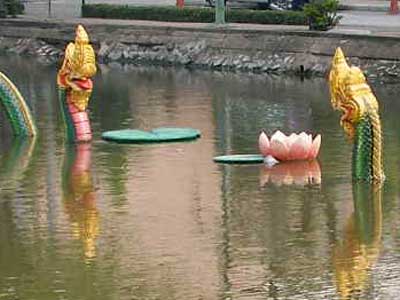
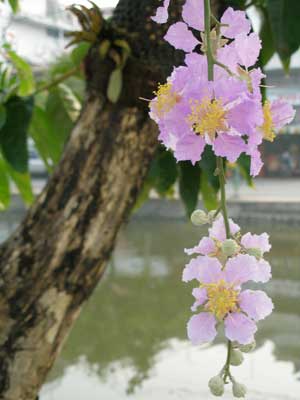
We arrived at the main gate of Wat Phra That Doi Suthep (or just Doi Suthep for short). A stupa was first built here in 1383. After that, the temple grew and added many colorful shrines. The legend goes: a monk named Sumanathera found a bone that was believed to be part of the Buddha's shoulder. After many travels, a piece of the bone was placed on the back of a white elephant, which was released into the jungle. The animal made its way to the top of this mountain then died. The bone now resides inside the main center stupa.
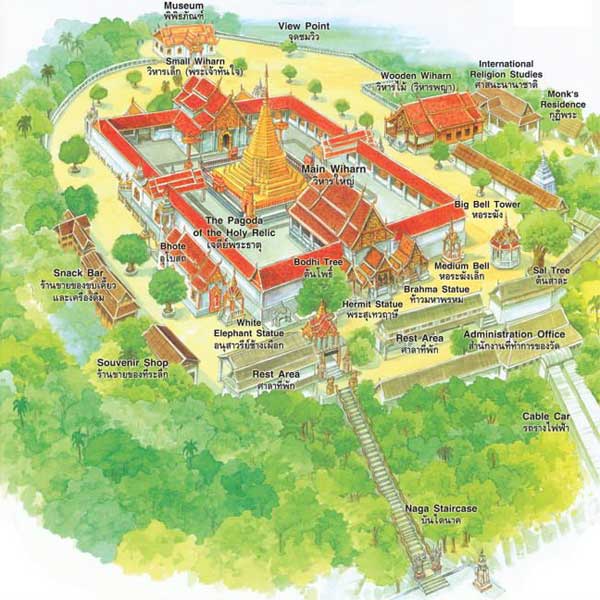
We began the long walk up the Naga staircase... with over 300 steps from the street. Vendor stands filled with souvenir and food lined the way, as did children in colorful, traditional outfits. We grabbed some mangos on sticks to help with the journey.
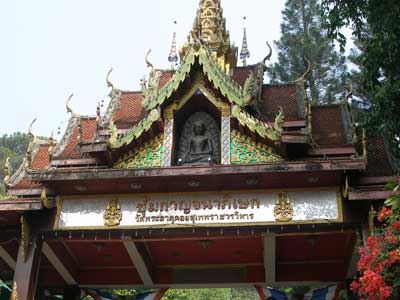
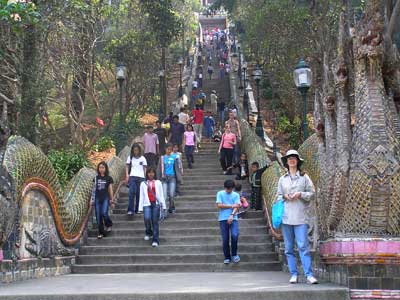
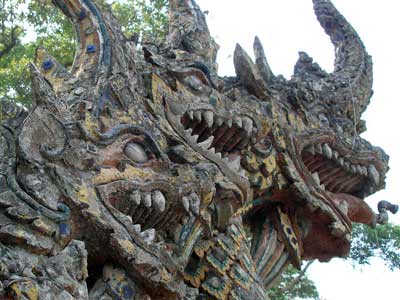
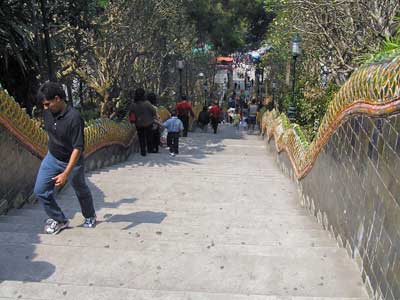
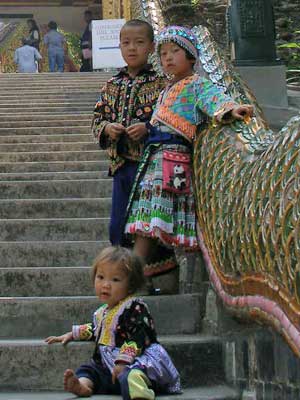
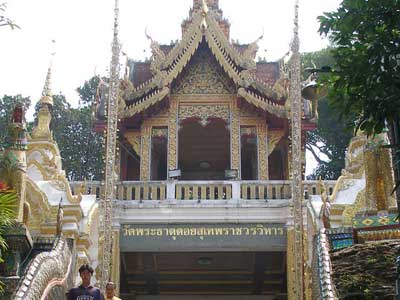
We first meandered among the various outer shrines, bells, gongs, statues and beautiful, glittery ornamentation. The smell of incense drifted along with us.
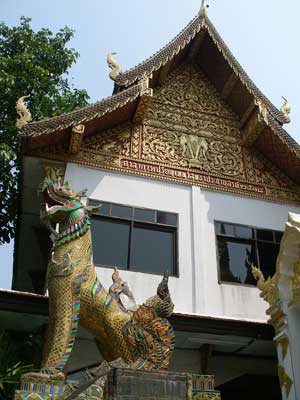
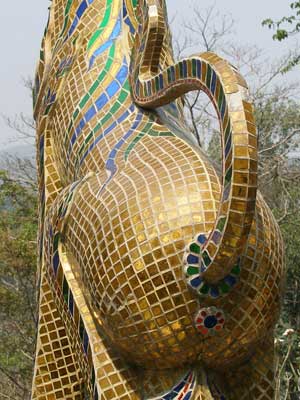
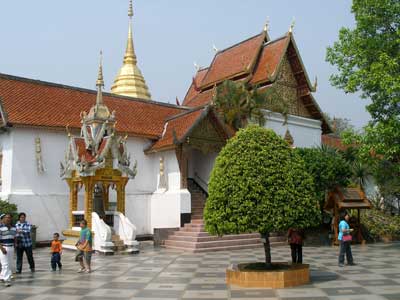
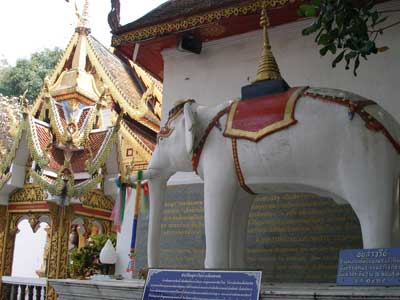
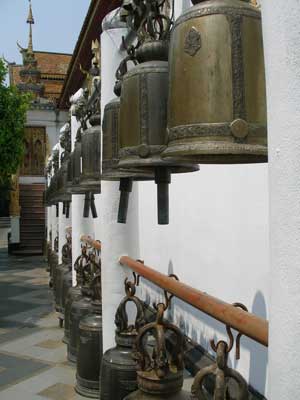

Bells and dorjes (the 'thunderbolt of enlightenment' at the top of the bell)
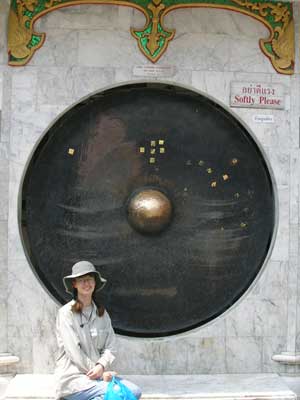

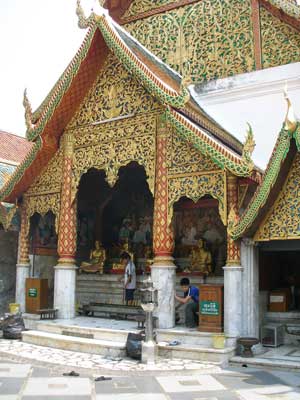

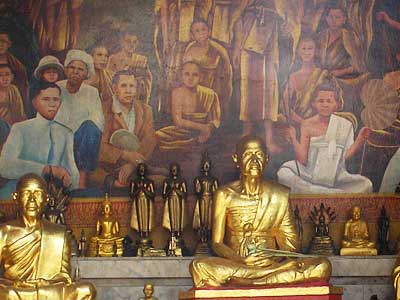
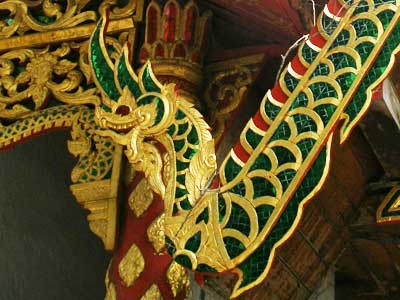
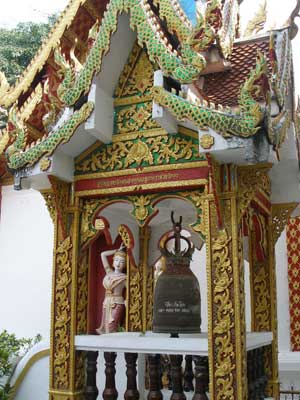
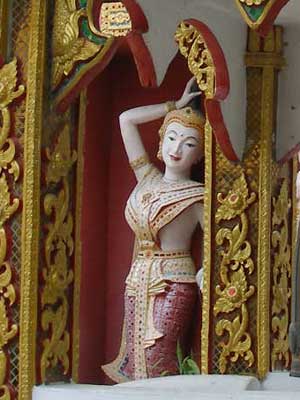
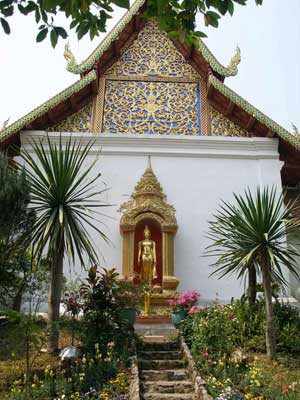
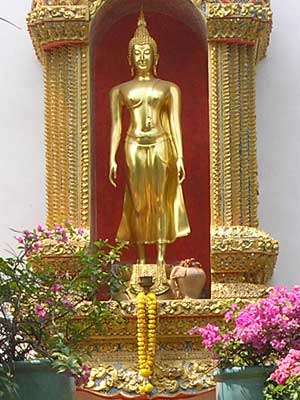
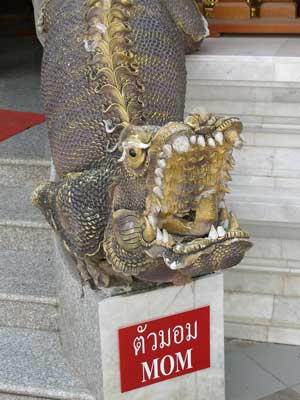
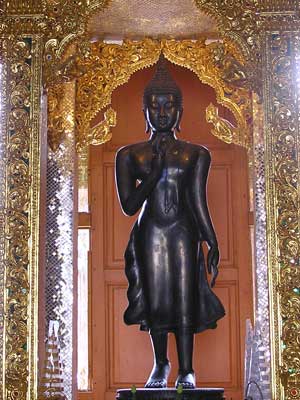
We took our shoes off and explored the main chedi in the inner courtyard. The ground was warm on our feet. There were Buddhas of all sizes, materials (gold, jade), and positions (standing, reclining, with a cobra headdress, and even being prayed to by an elephant and a monkey), each with its own donation box in front of it. People lit incense and candles, offered white tulip-like flowers, and walked in circles around the chedi. There was a can with sticks that one could shake and then spill on the ground... to read their fortune perhaps?
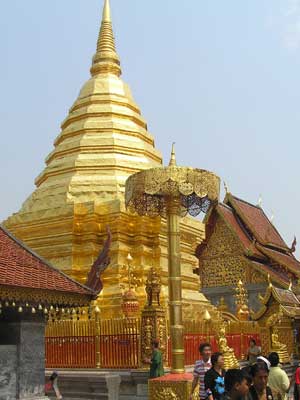
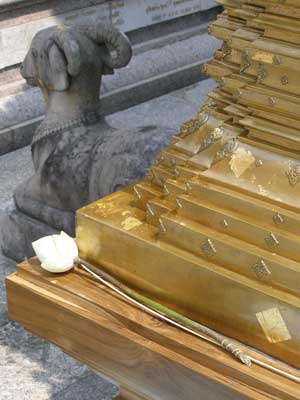

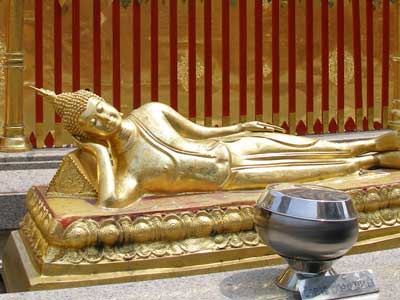
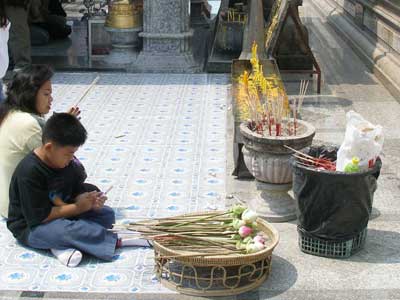
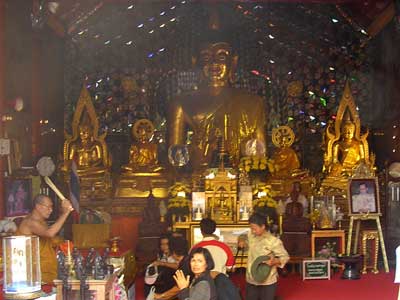

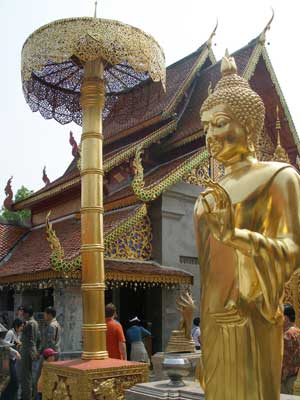
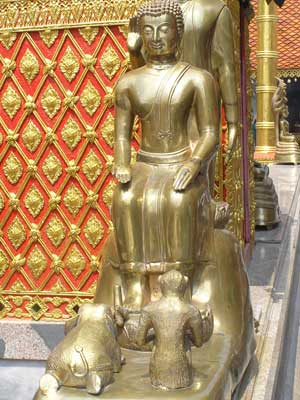
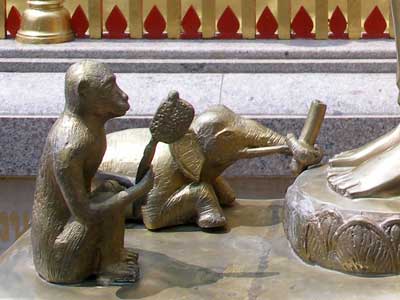
Apparently this is a common image in connection with the Honey-offering ceremony, commemorating how animals helped the Buddha by providing him food when he we went on a retreat in the Parileyya forest. A monkey brought him a honeycomb and an elephant brought fruit.
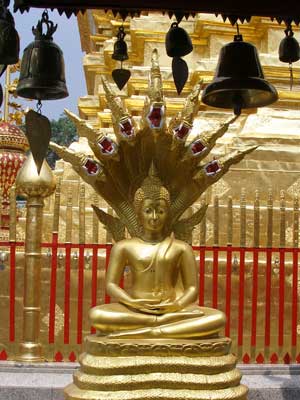
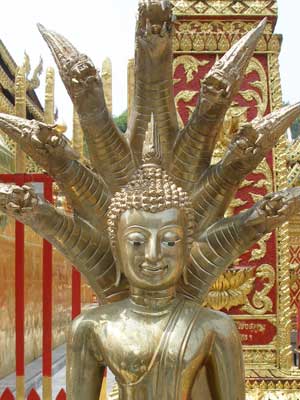
We had seen many nagas (deities in snake form) in the various wats (temples) in town. This seven-headed naga is called Mucilanda, the wise and mighty king of the serpents who rose up from the earth to protect the Buddha from the elements after he attained enlightenment.
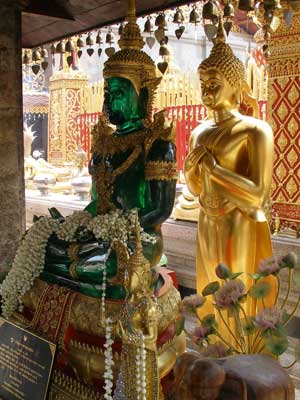
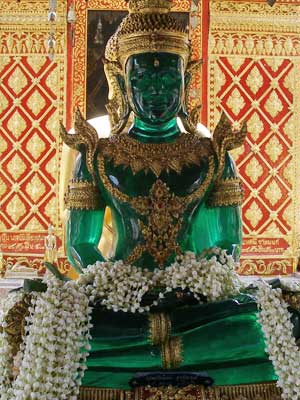
Jade Buddha

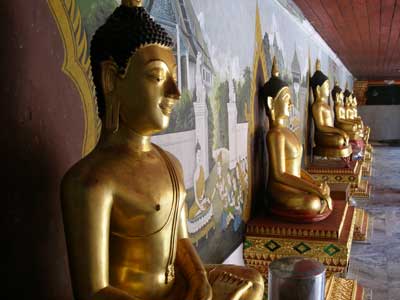
return • continue

